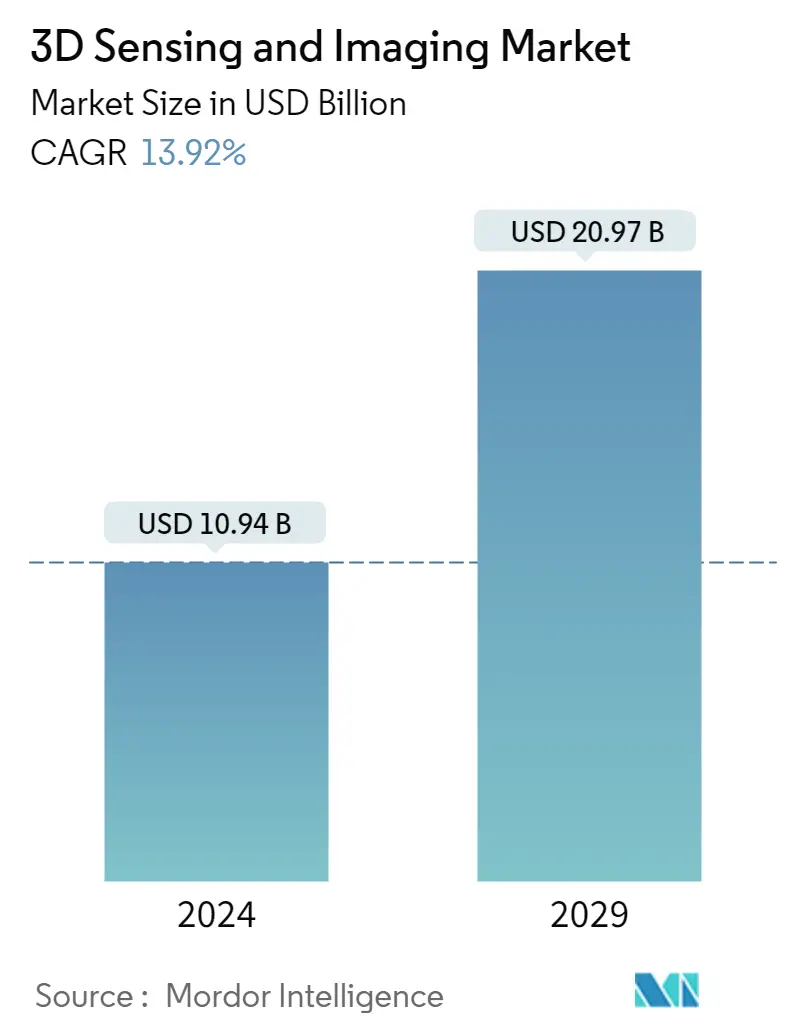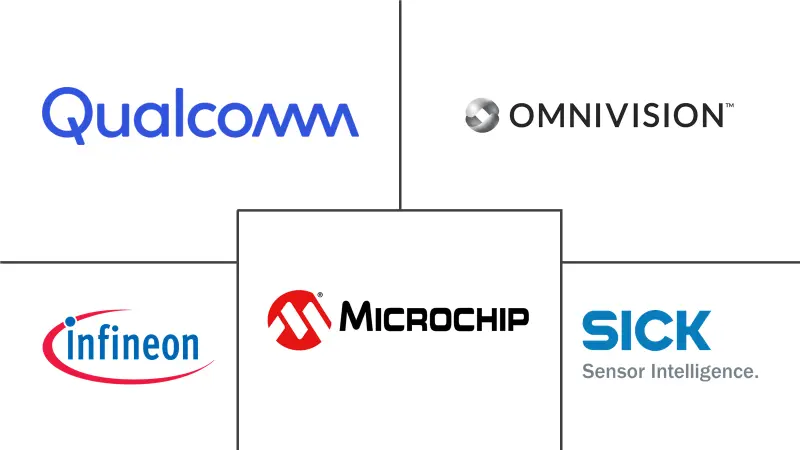Market Size of 3D Sensing and Imaging Industry

| Study Period | 2019 - 2029 |
| Market Size (2024) | USD 10.94 Billion |
| Market Size (2029) | USD 20.97 Billion |
| CAGR (2024 - 2029) | 13.92 % |
| Fastest Growing Market | Asia-Pacific |
| Largest Market | North America |
Major Players
*Disclaimer: Major Players sorted in no particular order |
Need a report that reflects how COVID-19 has impacted this market and its growth?
3D Sensing & Imaging Market Analysis
The 3D Sensing and Imaging Market size is estimated at USD 10.94 billion in 2024, and is expected to reach USD 20.97 billion by 2029, growing at a CAGR of 13.92% during the forecast period (2024-2029).
Increasing the adoption of sensors in various industry verticals has led to the development of 3D technology that can gauge shapes in real-time. Instruments that were once bulky are now miniaturized due to advanced technologies.
- The home gaming industry offered one of the first practical applications of 3D sensing for consumers, with time of flight (ToF) sensors capturing the movements and gestures of players to create a new interactive gaming experience.
- However, the arrival of 3D sensing is most noticeable in today's smartphone technology. User-facing 3D scanning enhances security through facial recognition, while world-facing 3D sensing creates new opportunities for high-performance depth-sensing photography and augmented reality.
- The automotive industry, which once seemed like an unlikely beneficiary of 3D sensing technology, is currently featuring advanced driver-assistance systems (ADAS) and autonomous vehicles enabled by 5G and the IoT, making 3D sensing a crucial part of transportation safety. Additionally, the LiDAR systems offer short- and long-range 3D sensing that enables vehicles to independently assess their surroundings in real time.
- For instance, in February 2021, LeddarTech, a prominent player in Level 1-5 ADAS and AD sensing technology, announced the availability of Leddar PixSet, a sensor dataset for ADAS and autonomous driving research and development.
- Just as CMOS sensors have replaced CCD devices, the emergence of newer, niche-based imagers is expanding the functionality of machine vision applications. Major applications of these systems in the automotive sector are quality inspections and machine guidance. Moreover, various machine vision technologies are being deployed in automotive inspection applications. This includes 3D imaging, multi-camera systems, barcode reading, smart cameras, and line scan cameras.
- In terms of technology, the growing adoption of time of flight, structured light, and stereoscopic vision across industries is driving the market's growth. For instance, stereoscopic vision technology is used in bullet cameras installed for monitoring people's movement at door entrances and other places. FLIR Systems (U.S) manufactures Stereo Vision cameras Systems with stereoscopic vision technology.
- COVID-19 impacted the operations of multiple OEMs across the globe that were involved in various stages ranging from production to R&D. The 3D sensing market for consumer and industrial applications was negatively affected during the COVID-19 pandemic due to the decline in the consumer spending trends, which led to the macro slowdown of the economy all over the globe. However, the increasing adoption of 3D sensing and imaging technology in smartphones and gaming consoles is expected to increase the demand for 3D sensing and imaging technology applications in the market.
